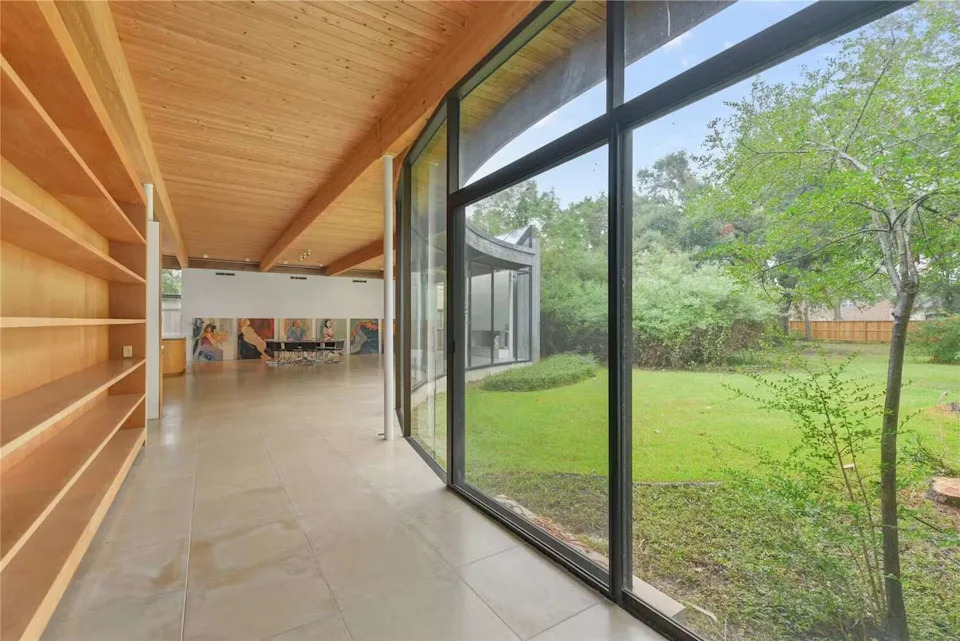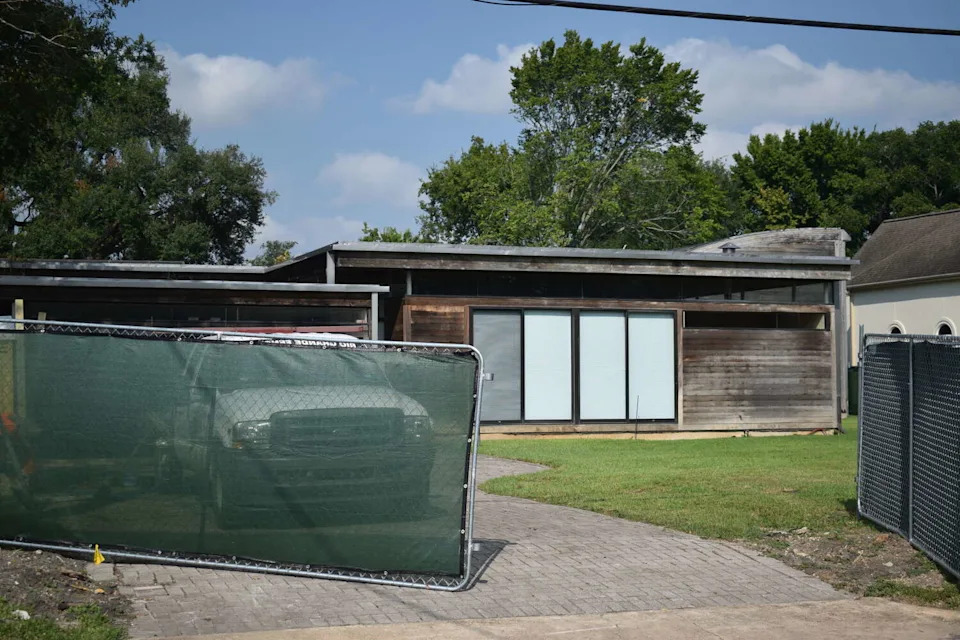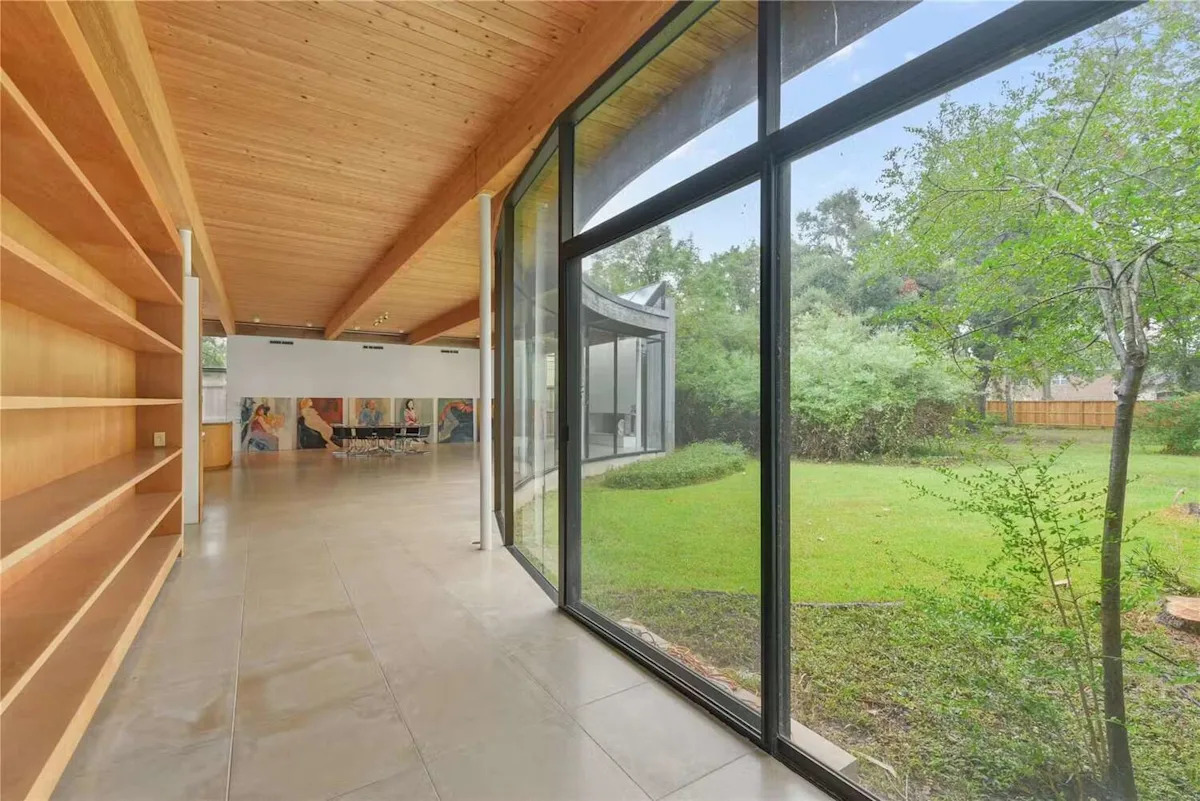An architectural treasure hidden in Bellaire may soon be gone forever.
Nestled on Mulberry Lane in Houston’s city-within-a-city is the historic midcentury home and studio of the late, towering modernist architect Victor Lundy. The house’s sleek wood-and-glass seems subdued next to the rest of the street, a mix of multi-million dollar new builds styled after Colonial homes and Spanish villas.
But the peaceful, quaint house at 701 Mulberry Lane is slated to be demolished despite the best efforts of local and national architectural preservation groups. The home, which was built in 1988, was listed for sale in October and was sold by his son when Lundy died at the age of 101 in November 2024.
“It is hoped that a new owner will revitalize and cherish this special home for the future,” the listing agent wrote in October.
According to modern architecture preservation group Docomomo US, the group and several Houston-area preservation groups approached the buyers with a $1.75 million offer, just above the asking price. The groups presented the new owners with a letter stating that the Lundy house “is an important local landmark, as evidenced by the awestruck crowds during recent open house events there, but also so much more.”
But the appeal was rejected “firmly.” According to Preservation Houston, the new buyers originally wanted to buy the house and the accompanying studio where Lundy worked. But they instead decided to demolish it and build something in its place, deeming the existing house too small.

The interior of late architect Victor Lundy’s home. (Pro House Photos/For Martha Turner Sotheby’s International Realty )
Bellaire, which is its own city inside of Houston, has no historical preservation ordinances. In a blog post, Preservation Houston noted that many historic homes and ranches in Bellaire have been demolished and replaced.
Today, the Lundy house at 701 Mulberry is surrounded by construction fencing. Trees in the yard have been removed, and contractors were beginning to move equipment onto the property when Chron visited the home on Thursday. Houston Mod and Preservation Houston, who are part of the efforts to save the house, didn’t immediately respond to a request for comment about whether or not preservation efforts are still ongoing.

Construction fencing and equipment surrounds the home of Victor Lundy on September 18, 2025, in Bellaire, Texas. The home is allegedly slated for demolition. (Gwen Howerton/Chron.com)
Victor Lundy produced some of the most recognizable works of modern architecture in America. Born in New York City in 1923, Lundy studied architecture at NYU before joining the Army during World War II. During the war, Lundy sketched much of what he saw while serving in the infantry, creating a rare account of life during wartime that now resides in the Library of Congress. After returning home, he studied Bauhaus-style architecture at Harvard. Lundy and his wife, Anstis Lundy, moved to Houston in 1976. The home on Mulberry Lane was finished in 1988.
Lundy’s buildings are classic examples of modernism and can be found across the nation. The Warm Mineral Springs Motel in Florida is perhaps his best-known work alongside the U.S. Tax Court Building in Washington D.C., and the First Unitarian Church in Westport, Connecticut. But Lundy also created several buildings in his adopted home state. He designed the Austin Centre in Downtown Austin, which opened in 1986, and One Eleven Congress, which opened just a year later. Lundy also planned, but never completed, several homes in Houston.
Many of Lundy’s works have been demolished. If his Bellaire home is also torn down, the architectural world will have lost an important symbol, Preservation Houston said.
“Losing the Lundy House and Studio is a reminder of what is at stake when our most significant buildings have no local preservation protection,” the group wrote. “Each loss underscores the urgent need for stronger preservation policies in cities like Bellaire, and reminds all of us who care about history and architecture to keep pressing for the protections that safeguard the places that enrich our communities.”
More Culture
Reboot | Late stars of ‘King of the Hill’ get the homage they deserve
Secret | Beyoncé fans are convinced new ad lays out her Act III
Impact | SpaceX launch stressors could soon come for another animal
Split | Houston’s most dramatic billboard lawyers are breaking up
For the latest and best from Chron, sign up for our daily newsletter here.
